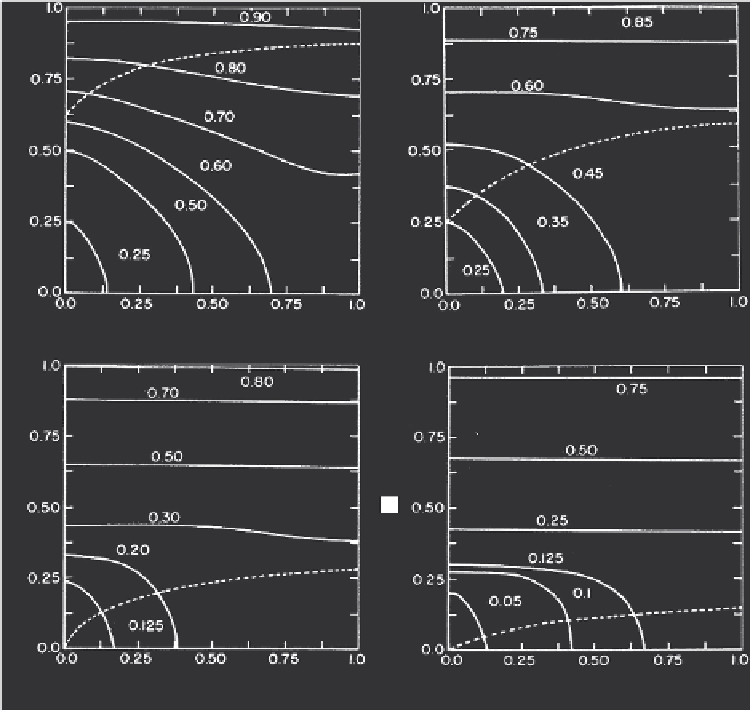Geoscience Reference
In-Depth Information
z
+
z
+
x
+
x
+
(a) t
+
= 0.013
(b)
t
+
= 0.518
z
+
z
+
x
+
x
+
(c) t
+
= 2.274
(d) t
+
= 4.762
(
aD
)
−
1
Fig. 10.5 Same as Figure 10.4 for an aquifer with
D
c
+
=
0
,
B
+
=
1
.
0
,
=
0
.
10,
n
=
3 and
b
=
3.
(From Verma and Brutsaert, 1970.)
indicate, and that probably a smaller value of (
aD
)
−
1
is required before capillarity above the
water table can be neglected in the calculation of outflow rates. In any event, these results
show that it is mainly (
aD
)
−
1
that can be used to determine whether or not the capillary
flow above the water table is important.
Equation (8.15), from which the parameter
a
was obtained for these numerical exper-
iments, may not always be the optimal way to parameterize the soil-water characteristic.
Therefore, it is useful to broaden this criterion by defining a
capillary zone number
H
c
D
Ca
=
(10.4)
in which
H
c
is a characteristic suction (negative pressure) required to reduce the degree of
saturation of the soil to a certain fraction. This dimensionless quantity Ca can be imple-
mented with the other expressions presented in Section 8.2.4 as well. For instance in the
case of Equation (8.14) one can simply put Ca
=
(
H
b
/
D
). It should be recalled that in
Equation (8.15) the parameter
a
−
1
represents the (negative) pressure head to reduce the



